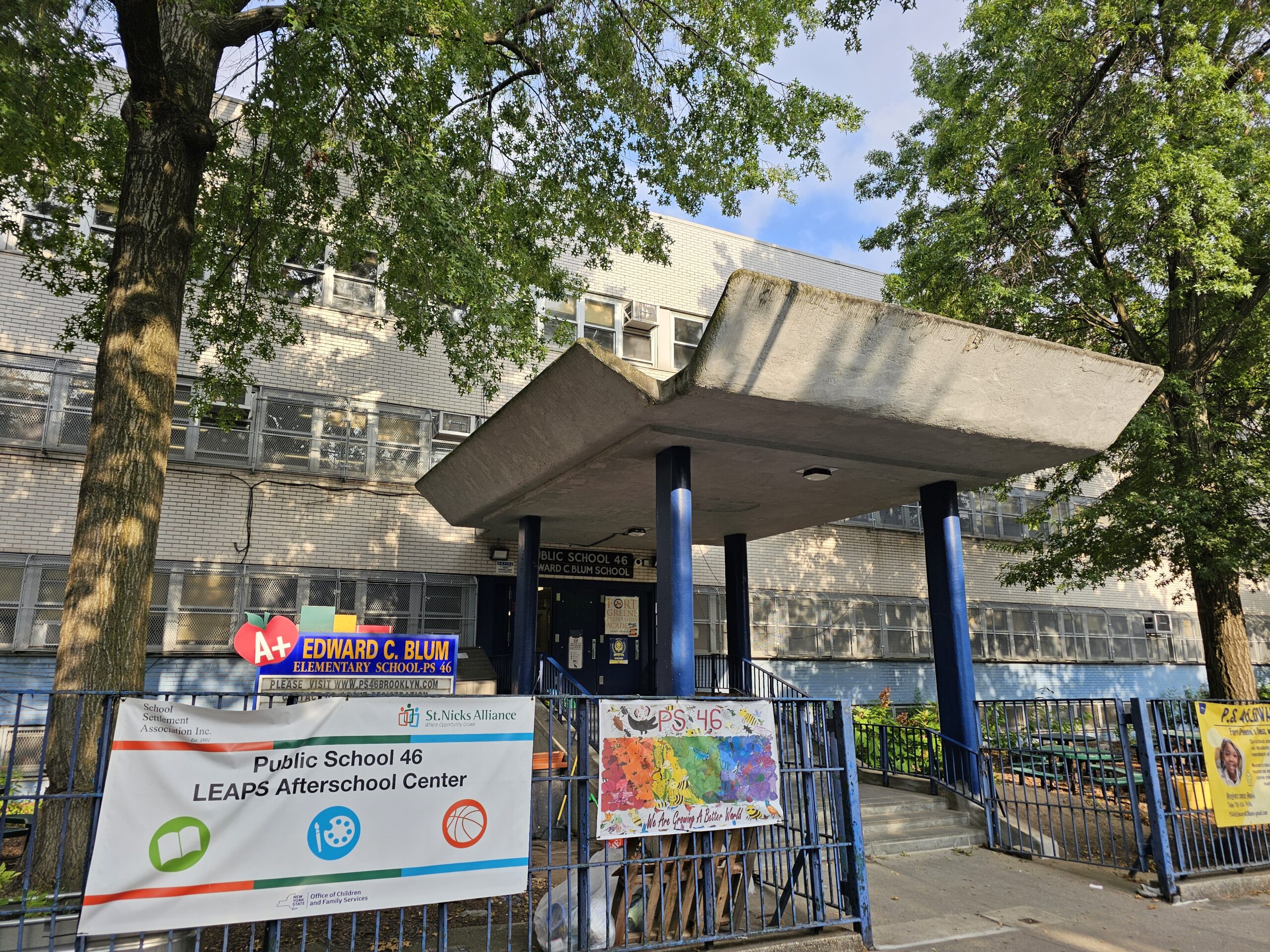A pilot internship program created in partnership between the Creative Arts Therapy (CAT) Department, Pratt’s Center for Art, Design, and Community Engagement K-12, and PS46 Edward C. Blum launched last fall. Three Pratt graduate students interned at the local elementary school, just blocks away from Pratt’s Brooklyn campus, to bring an element of art therapy into the classroom. In addition to contributing to the art room, the CAT interns provided individual and small group art therapy sessions to support social-emotional learning and promote wellness.
Like many ideas, this one was inspired by the intersection of mission, opportunity, and need. Nearby PS46 was assigned by the City to accept a cohort of new students, many of whom were being housed in the Hall Street shelter. Recognizing that youth with lived experiences of navigating multiple languages, housing and food insecurity, and other hardships were coming to a school that faced a shortage of support staff, Senior Director of Pratt’s Center K-12 Daniel Bergman and Chair of Graduate Creative Arts Therapy Valerie Hubbs sensed an opportunity to extend Pratt’s expertise and capacities into the community and serve both K-12 youth and Pratt students.
Last year, Zoe Abronson, Bisma Bhatti, and Elizabeth Reimer, all Master of Professional Studies Art Therapy ’26, reported to PS46 twice a week, providing therapeutic presence and supportive services for over 200 students, ranging from Pre-K to fifth grade. Some days, the interns’ main role was to get to know the PS46 students and provide personalized attention. On other days, they infused their art therapy methods into the curriculum, putting their academic studies into practice. They spent classes circulating around the room, assisting the students and the art teacher. “It’s really special, and we get such a beautiful insight through these kids’ minds, and it reveals things about them that we didn’t know—that maybe they didn’t know about themselves,” said Abronson.
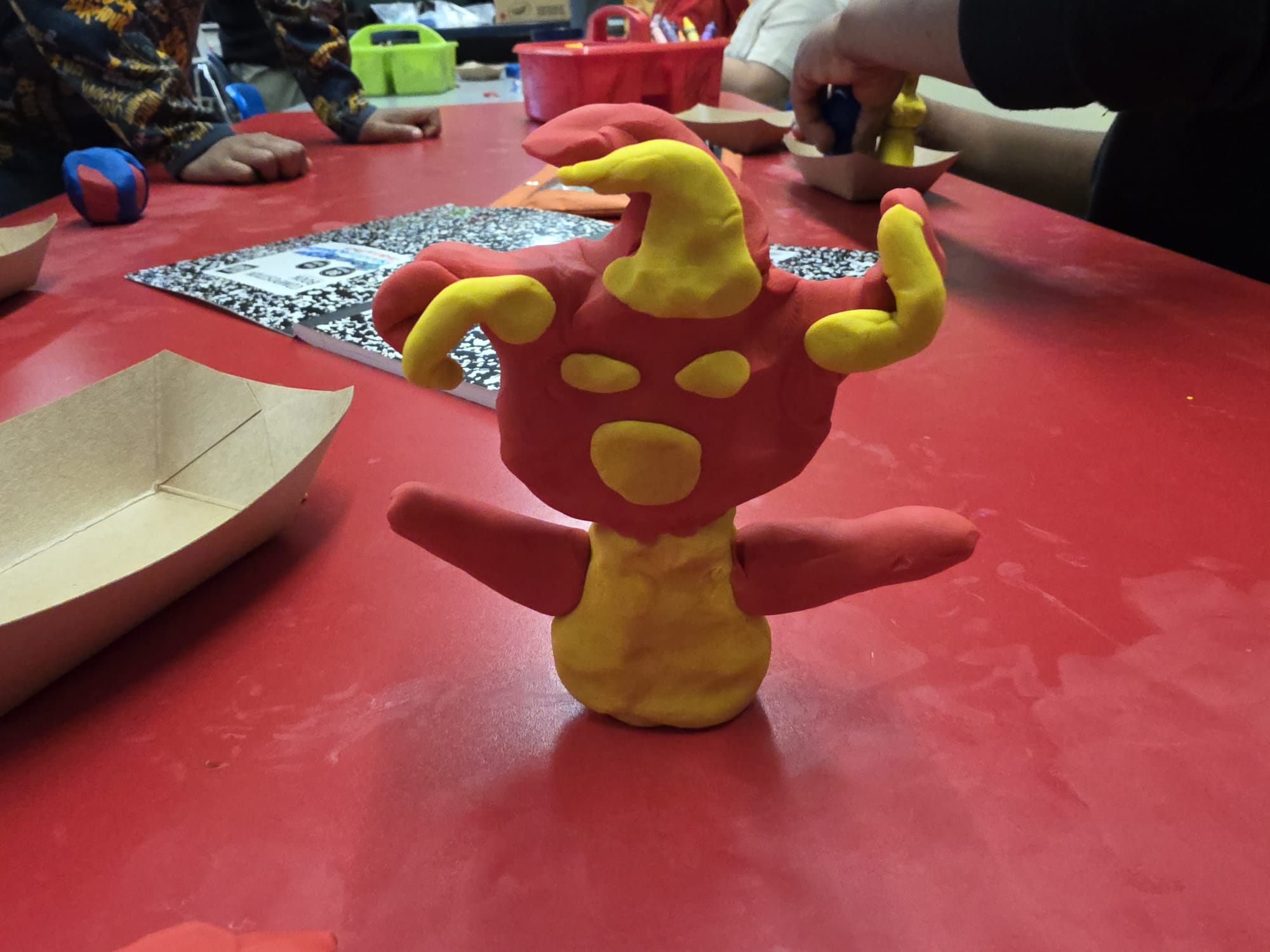
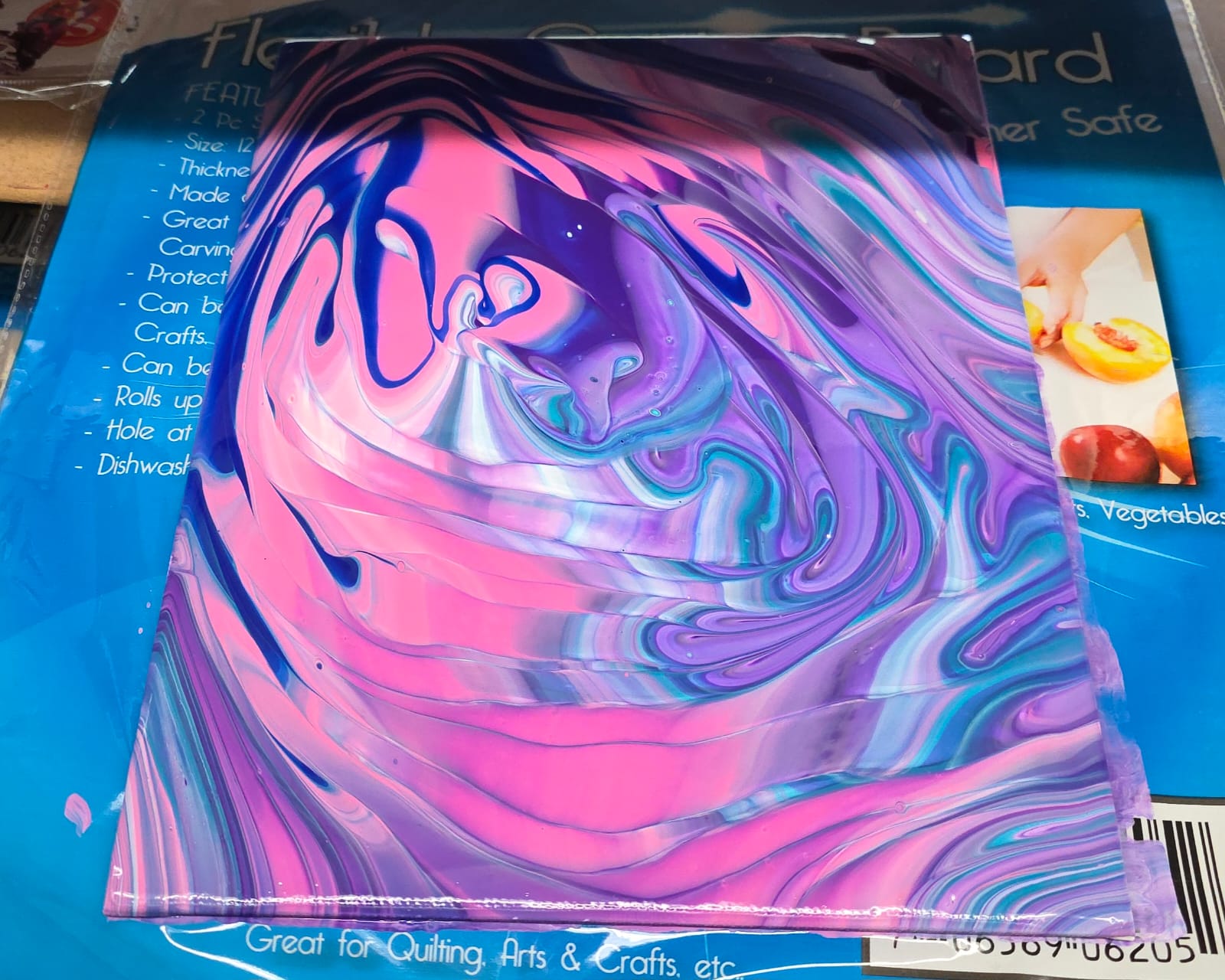
The internship was overseen by Assistant Professor of Creative Arts Therapy Kimberly Faulkner, Master of Professional Studies, Licensed Creative Arts Therapist, and Registered Art Therapist, who not only taught a “supervision class,” but also several additional courses for the department. Faulkner also served a critical role as the on-site supervisor for the Pratt student interns, guiding and supporting them as they completed their required clinical training hours at PS46. Her teachings about use of art materials and therapeutic impact, as well as in-session supervision, provided the needed context and guidance for the interns’ training and reflection.
The students offered a variety of art therapy directives as a dynamic force for change. Reimer focused on teaching students healthy coping mechanisms and behaviors, including methods for visualizing and expressing anger in a constructive way. By guiding PS46 students to create and reflect on art and artistic process, the art therapy interns promoted self-expression, improved self-esteem, and more effective communication skills. Bhatti described one very young student who had spent time in classes crying and not speaking. After only a few months, they were actively participating and interacting with their classmates.
PS46 is a dual language school; some students are fully bilingual, some speak only Spanish or English, and others speak a combination of the two. Despite having to navigate a language barrier, Abronson was able to connect with students on a personal, emotional level through the art. “Non-verbal communications can be so powerful and you can have these connections with kids even if you don’t speak the same language,” they said. The interns played a key role in fostering these connections, not only between themselves and the students, but also amongst the students themselves, encouraging meaningful community building.
When the interns were not at PS46, they were completing the rest of their graduate school responsibilities at Pratt. The supervision class, embedded into the Creative Arts Therapy curriculum, gives graduate students a chance to compare notes with their peers, processing their experiences in real time, together. Though CAT students are in vastly different environments with different populations, they still have a lot to share with one another. “You get the support that you need,” said Abronson.
“I definitely lean on Kimberly and other professors to support me through it and make sure I’m doing things the right way and in a beneficial way to the students,” echoed Reimer.
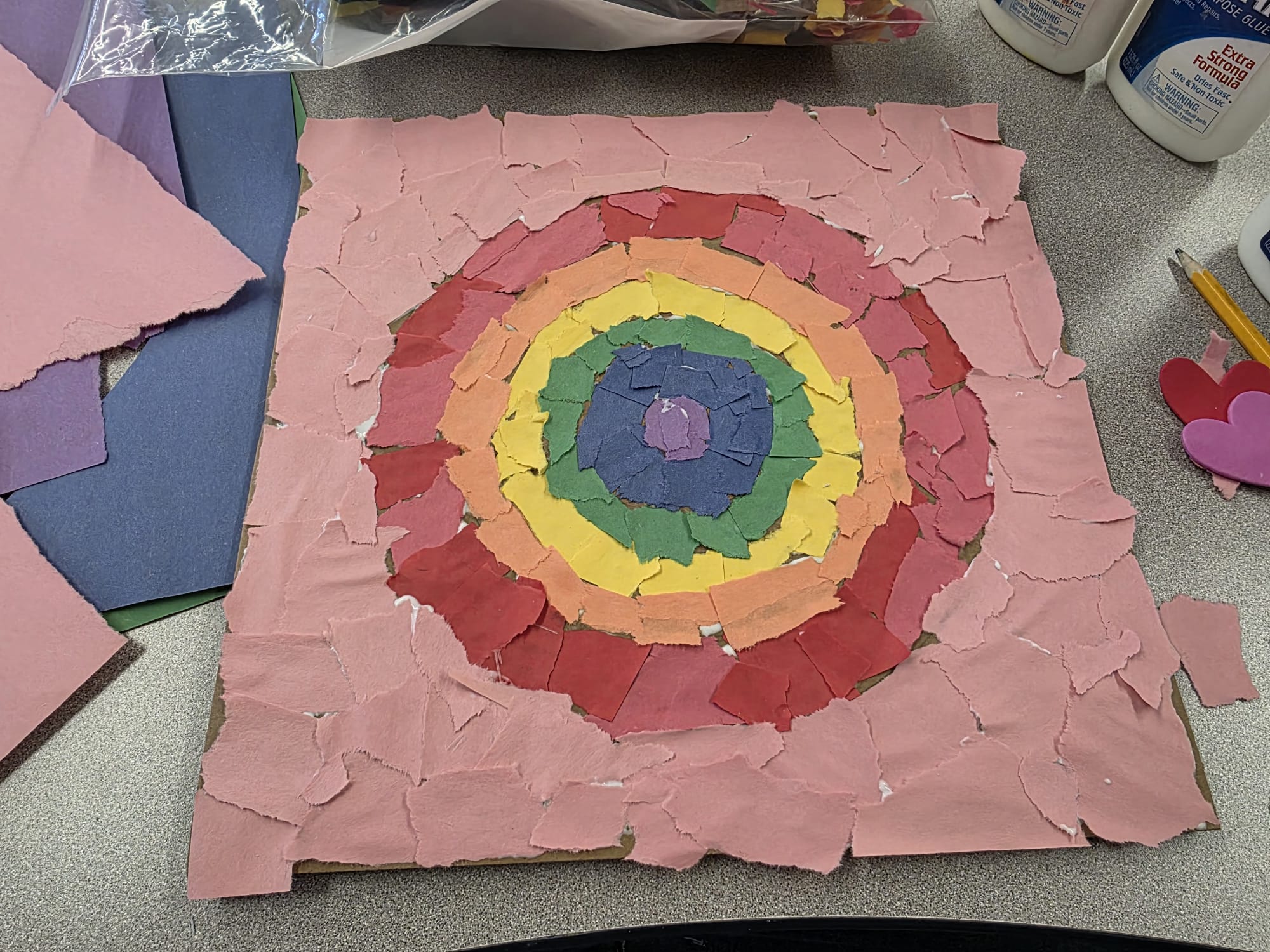
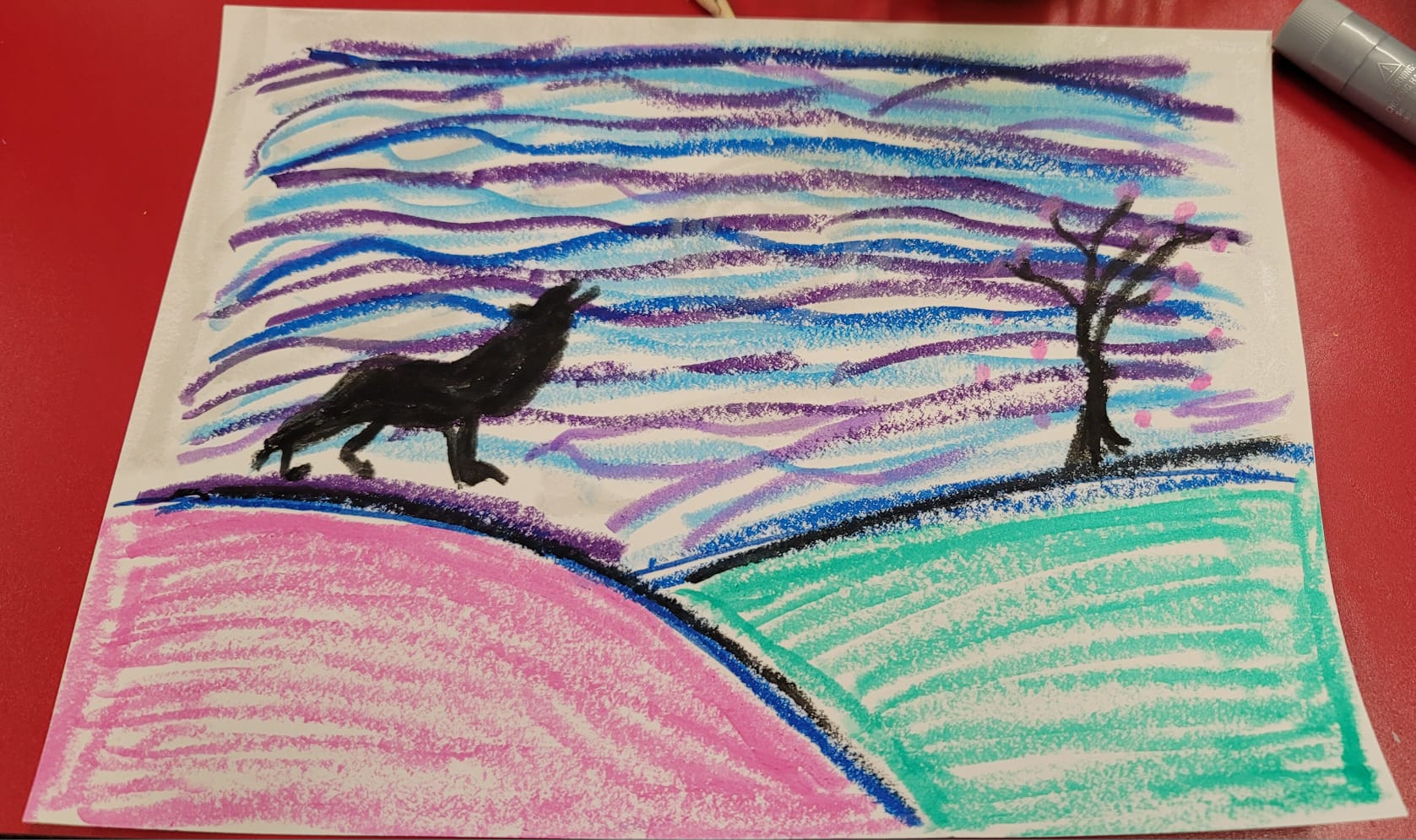
As the year came to a close, Abronson, Bhatti, and Reimer reflected on having worked with nearly every class in the school. They’ve been surprised to see the impact that’s possible in such a short time. Over winter break, Bhatti worked with a kindergarten class for a day. Months later, when she ran into them again, the kids remembered. “They all ran up to me and were so excited, and they remembered that session,” said Bhatti. “I didn’t think one session of just 40 minutes would make that much of a difference, but they all remembered.”
“It’s been really cool to see that shift and know that we’ve had an impact on the community,” said Bhatti. “I’ve been enjoying it so much and I could see myself continuing doing this.”
Celebrating the partnership, Creative Arts Therapy and the Center K-12 say that they plan to continue providing creative arts therapy services for PS46 in the coming academic year. “This initiative is important on many levels,” said Faulkner. “Pratt’s location offers a powerful opportunity to extend care directly into the surrounding community. Recognizing the significant social-emotional needs of PS46 students, the Creative Arts Therapy interns made a meaningful impact through their therapeutic presence—while gaining invaluable experience in return. I am deeply grateful for Pratt’s support, the dedication of PS46 teachers and staff, the creativity of the PS46 students, and the commitment of our determined Creative Arts Therapy interns.”
